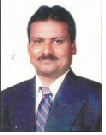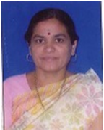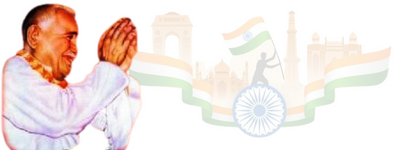Department of Physics
About Department
The department of Physics was established in 1995 which is now one of the best well-equipped center for undergraduate studies and affiliated to Shivaji University Kolhapur. Department aims to enable students to enjoy the subject and to stimulate an interest in the social and economic implications of Physics in society. It has two separate laboratories including a dark room containing more than 50 experimental set up. Every year it teaches around 100 UG students for in-depth understanding of the subject..
Teaching faculty members are recruited according to UGC norms of qualification and the State Government rules. The department presently has two full time faculty members, one of them Dr. S. B. Patil are Ph.D . holder and one faculty member Prof. Miss. S. S. Kadam doing her Ph. D. All faculties are active researchers in various areas of Physics like materials Science, thin film etc. One faculty member Dr. S. B. Patil is recognized Ph.D. guide in materials science area. All faculty have publications in peer reviewed journals and conference proceedings. All faculty participat in International conferences held in India . Department is well equiped with internet facility. The department has research facility with equipments like digital balance, magnetic stirrer, furnace CRO, frequency generator, power supply, spectrometer, travelling microscope, e/m apparatus, computer, etc. The faculty members published papers in different national and international reputed journals.
The faculty members participated and presented papers in national and international conferences, symposia, workshops etc. Faculty members are actively involved in the syllabus framing and restructuring at the University level. Apart from traditional method of board teaching, modem ICT enabled methods using the Power Point presentations on LCD projector and audio-video educative material available as CDs and material accessed from the internet, is liberally utilized by the faculty members. Students are also encouraged to develop presentations using these resources.
Vision
1) To graduate distinguished physicist in knowledge and various skills. 2) To provide education that generates good citizen
Mission
• To provide high quality physics education and equipping students for higher education. • To develop among students, sensitivity to contribute to the betterment of society through knowledge in Physics.
Goals
1)To improve the fundamental concepts and advanced techniques of physics. 2)Provide students with modern techniques in physics.
| Photo | Name | Qualification | Designation | Date of Appointment | Resume |
|---|---|---|---|---|---|
 |
Dr. S. B. Patil | M. Sc. M. Phil. Ph. D. | Head and Associate Professor | 19/7/1993 | View |
 |
Prof. Miss. S. S. Kadam | M. Sc. | Assistant Professor | 3/9/1997 | View |
|
Sr. No. |
Class |
Paper No. |
Name of Paper |
Total Units |
|
1 |
B. Sc. I |
I |
DSC- 1 A MECHANICS-I |
2 |
|
2 |
|
II |
DSC- 2 A MECHANICS-II |
2 |
|
3 |
|
III |
DSC- B ELECTRICITY AND MAGNETISM-I |
2 |
|
4 |
|
IV |
DSC- 2B ELECTRICITY AND MAGNETISM-II |
2 |
|
|
|
|
|
|
|
5 |
B. Sc. II |
V |
DSC-C1 THERMAL PHYSICS AND STATISTICAL MECHANICS – I |
2 |
|
6 |
|
VI |
DSC-C2: WAVES AND OPTICS - I |
2 |
|
7 |
|
VII |
DSC-D1 THERMAL PHYSICS AND STATISTICAL MECHANICS – II |
2 |
|
8 |
|
VIII |
DSC- D2 - WAVES AND OPTICS-II |
2 |
|
|
|
|
|
|
|
9 |
B. Sc. III |
IX |
DSE-E1 Mathematical Physics |
2 |
|
10 |
|
X |
DSE-E2 Quantum Mechanics |
2 |
|
11 |
|
XI |
DSE-E3 Classical Mechanics and Classical Electrodynamics |
2 |
|
12 |
|
XII |
DSE-E4 Digital and Analog Circuits and Instrumentation |
2 |
|
13 |
|
XIII |
DSE-F1 Nuclear and Particle Physics |
2 |
|
14 |
|
XIV |
DSE-F2 Solid State Physics |
2 |
|
15 |
|
XV |
DSE-F3 Atomic and Molecular Physics and Astrophysics |
2 |
|
16 |
|
XVI |
DSE-F4 Energy Studies and Materials Science |
2 |
1. Program Specific Outcomes and Course Outcomes: E nclosed separate copy of PSOs and Cos
PSO - 1 :Attain strong foundation in the fundamentals of physics with and ability to
pursue higher education and research.
PSO - 2 : Formulate, solve and analyze Physics problems.
PSO - 3 : Perform laboratory procedures in the coreareas of physicsas per the
laboratory standard norms.
PSO - 4: Skilled in facing competitive examinations for employment and higher
education
Program Specific Outcomes (PSO)---Practical
After successful completion of B.Sc.(Hons.) Physics Course student will be able to: define the basic laws involved in Physics understand the concepts and significance of the various physical phenomena.
PHYSICS
PROGRAMME OUTCOMES: (PO)
Students having an academic background of science at 10+2 level can pursue B.Sc programme in various branches. After the completion of the B.Sc (Physics) degree there are various options available for the science students, they can pursue master degree in Science i.e. M.Sc, work in research related fields and can even look for professional job oriented courses. Often, in some reputed universities or colleges the students are recruited directly after the completion of the course. The student after graduating will be eligible for various government exams conducted by UPSC, MPSC etc.
COURSE OUTCOME
|
|
|
Semester-I |
|
Course Code |
Paper |
Course Outcome |
|
DSC A1 |
Paper –I Mechanics-I |
▪Students are able to understand and identify scalar and vector physical quantities in mechanics ▪Students are able to understand and apply vector algebraic methods to elementary exercises in mechanics ▪Students are able to understand and identify degree and order of given differential equations ▪Students are able to solve second order, homogenous ordinary differential equations in mechanics ▪Students are able to understand the conceptual evolution of conservation laws of momentum and energy for both single and system of particles ▪Students are able to understand and apply basicconcepts of rotational motion ▪In general, students are capable of correlating above concepts and methods in mechanics to both theoretical and experimental domains revealing analytical as well as numerical skills |
|
DSC A2 |
Paper –II Mechanics-II |
Students are able to understand and apply Newtons Law of Gravitation to celestial objects ▪Students are able to understand geometry of planetary orbits under the action of central force ▪Students are able to solve numerical problems based on Kepler`s Laws of planetary motion ▪Students are able to understand simple concepts like weightlessness, Geosynchronous satellite and GPS ▪Students are able to setup differential equation for simple harmonic motion and its allied cases ▪Students are able to calculate time averages of KE, PE and TE ▪Students are able to revise basic concepts such as stress, strain and elastic constants of elasticity ▪Students are able to derive elastic constants for beam supported at both ends and at one end ▪Students are able to derive elastic constant (eta) of a wire under torsional oscillations (Searle’s Method) ▪Students are able to explain the phenomenon of surface tension on the basis of molecular forces ▪Students are able to derive the relation between surface tension and excess pressure ▪Students are able to perform an experiment to determine ST by Jaeger`s method ▪Students are able to discuss and state the factors affecting the ST ▪In general, students are capable of correlating above concepts and methods to both theoretical and experimental domains revealing analytical as well as numerical skills |
|
Semester-II |
||
|
DSC B1 |
Paper –III Electricity and Magnetism-I |
Students are able to understand the physical significance of gradient, divergence and curl ▪Students are able to apply concepts in vector calculus such as gradient, divergence and curl related to vector and scalar fields using Gauss, Stokes and green`s theorem ▪Students are able to understand and apply concepts of electrostatic field, potential to point charges, electric dipole and geometrically regular charged bodies ▪Students are able to understand and apply concept of capacitor to isolated conductor, parallel plates, cylindrical and spherical capacitors and allied modifications in it ▪Students are able to understand and apply concept of energy density in electric field ▪Students are capable of applying above concepts to solve numerical exercise in electrostatics |
|
DSC B2 |
Paper –IV Electricity and Magnetism-II |
Students are able to understand importance of complex numbers in analysis of AC Circuits contacting Inductance(L) Capacitor(C) and Resistance (R) and their various configurations ▪Students are able to define and apply the concepts in AC circuits such as Impedance (Z), reactance (XC and XL), Admittance, Susceptance and Quality Factor (Q) ▪Students are able to understand and design AC bridge: Owen`s Bridge ▪Students reveal mastery in basic terminology in network analysis for further studies ▪Students are able to state and apply Network theorems to simple circuits ▪Students are able to understand basic working principle of Ballistic galvanometer ▪Students are able to define constants of ballistic galvanometer ▪In general, students are capable of applying above concepts in network analysis to both theoretical and experimental domains ▪Students are able to understand simple elementary concepts such as magnetization and intensity of magnetization ▪Students are able to state Biot-Savart`s law and are capable to apply it to straight, circular wires and solenoid ▪Students are able to understand concept of magnetic vector potential along with Ampere`s circuital law ▪Students are able to understand the explain the phenomenon of hysteresis in magnetism ▪Students are able to discriminate different magnetic materials based on their characteristic properties |
|
|
Semester-III |
|
|
DSC-C1 |
Paper –V THERMAL PHYSICS AND STATISTICAL MECHANICS – I |
Kinetic Theory of Gases and thermometry Students will able to understand Mean free path, ,Transport Phenomena:, Principle of thermometry, types of thermometers, Thermodynamic system, , Zeroth Law of thermodynamics, , First law of thermodynamics,, Applications of First Law (Isothermal process, , reversible & irreversible processes, Second law of thermodynamics, Carnot’s ideal heat engine, , Entropy |
|
DSC-C2 |
Paper –VI Physics DSC-C2: WAVES AND OPTICS - I |
Students will able to understand Superposition of Harmonic Oscillations, Coupled Oscillations, Waves Motion and Ultrasonic waves, Sound and Acoustics of buildings, Viscosity, Physics of low pressure |
|
Semester-IV |
||
|
DSC-D1 |
Paper –VII THERMAL PHYSICS AND STATISTICAL MECHANICS – II |
Students will able to understand Thermodynamic Potentials, Theory of Radiation, Classical statistics, Quantum statistics. |
|
DSC- D2 |
Paper –VIII WAVES AND OPTICS-II |
Students will able to understand Cardinal points, Resolving Power of optical instruments, Polarization of light, Interference, Diffraction |
|
Semester-V |
||
|
DSE-E1 |
Paper- IX Mathematical Physics |
Students will able to understand Partial Differential Equation. Frobenious Method and Special Functions, Some Special Integrals, Complex Analysis |
|
DSE-E2 |
Paper – X Quantum Mechanics |
Students will able to understand Matter Waves, Schrodinger’s Wave Equation, Operators in Quantum Mechanics, Applications of Schrodinger Equation |
|
DSE-E3 |
Paper – XI Classical Mechanics and Classical Electrodynamics |
Students will able to understand Lagrangian Formulation, Techniques of Calculus of Variation, Special Theory of Relativity, Charged Particles Dynamics, |
|
DSE-E4 |
Paper – XII Digital and Analog Circuits and Instrumentation |
Students will able to understand Digital Electronics, TransistorsAmplifier and Sinusoidal Oscillators, Cathode Ray Oscilloscope, Operational Amplifier and Timer, Timer IC, |
|
Semester-VI |
||
|
DSE-F1 |
Paper – XIII Nuclear and Particle Physics |
Students will able to understand General Properties of Nuclei and Nuclear Model, Particle Accelerators, Nuclear Detectors, Particle Physics, |
|
DSE-F2 |
Paper – XIV Solid State Physics |
Students will able to understand Crystal Structure, X-Ray Diffraction, Magnetic Properties of Matter, Elementary Band Theory of Solids, |
|
DSE-F3 |
Paper- XV Atomic and Molecular Physics and Astrophysics |
Students will able to understand Atomic Spectra, Molecular Spectra, Raman Spectra, Structure of Universe, Stellar Evolution |
|
DSE-F4 |
Paper – XVI Energy Studies and Materials Science |
Students will able to understand Energy and Wind Energy, Solar Energy, Biomass Energy, Superconductivity, Nanotechnology, |
|
|
| Sr.No | Date | Event/Activity Name | Report |
|---|

